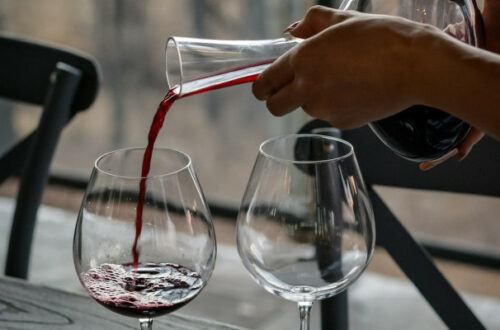
At what temperature should wine be served at?
While hosting, being in charge of the wine is no simple task! After knowing if you should let your wine breathe or decant it, you must also pay attention to the service temperature.
Indeed, too many good wines are ruined because served at the wrong temperature. And this leaves a bitter taste in your guests’ mouths… which is a shame especially if you spent all day cooking.
Lucky for you, I drew up the perfect post to answer your question : at what temperature should wine be served at?
The perfect temperature to serve your wine depends on … the wine
What a surprise: there are different kinds of wines!
There are dry white wines, sweet white wines, reds and rosés.
Different kinds of wines means different service temperatures.
Before we get to that, let’s study the impact temperature has on a wine, so you understand the importance of serving wines at the right temperature.
Impact of temperature on a wine
If the temperature of a wine is too low, the aromas will be altered. The wine will be closed making it seem sharper and more acidic.
On the contrary, if the temperature of a wine is too high, the alcohol will be enhanced. And no one is looking for the taste of alcohol in a wine. The wine will thus lose its finesse and freshness.
At what temperature should your wine be served at?
Well let me give you the recommended temperatures. However, if you want to fully understand the importance and impact of service temperature, I suggest you try out the experience at home.
Take a bottle of a wine, serve a glass at the recommended temperature, one glass too cold and one glass to hot. Taste and compare (and let me know in the comments!)
Anyway, a dry white wine, light-bodied, should be served fresh, between 7 and 10°C (ie 45°-40°F).
A fuller-bodied dry white wine should be served slightly fresh, between 10° and 13°C (50-55°F).
A sweet white wine or a sparkling -dry or sweet- wine should be served very fresh, between 6 to 8°C (43-45°F).
Red wines, which tend to be full-bodied, should be served at “room temperature”, meaning between 15° and 18°C (59-64°F)
ANECDOTE : Most sites will recommend you serving red wines at room temperature. Be careful with this notion. Indeed, this expression goes back to medieval times and “room temperature” at that time does not have the same meaning as today…
Air conditioning and central heating, which are becoming more and more common, can make a room too hot or too cold.
If you do not have a wine cellar indicating the temperature or a thermometer, I would suggest aiming for a temperature a little lower than the one recommended.
Why? Bear in mind, that at “room temperature”, a wine can easily take 2degrees in a few minutes. A wine “too hot” is harder to take back to the right temperature than a wine “too cold”.
For example, if a wine is slightly too cold, the best way to remedy to this is to either let the bottle gently reach the desired temperature by leaving it in the room or warming up the glass in your hands.
Moreover, seeing as red wine should be uncorked half an hour to an hour before serving, better have the bottle prepared at 15°C.
Last, having your bottle prepared slightly under the recommended temperature will enable you to serve wines at the correct temperature all dinner long.
A must-know technique to decrease the wine temperature in a few minutes
Avoid the fridge and the freezer at all costs, well the freezer especially. Thermally shocking the wine by putting in the freezer will only hurt it. And even after reaching “room temperature”, some aromas will have been lost.
So, imagine you have a dry white wine or a rosé (clairet as the French say, and not the Brits!) and need to cool it down rapidly because your guests are on their way over?
Grab a bucket, pour some icy water in it and a lot of salt. (salt is the secret ingredient). Put your bottle in your water with a lot of salt and let it soak for three minutes.
A clarification: when I talk about ice water, I am talking about water in a liquid state. Indeed, air being an insulator, a bottle simply immersed in a bucket filled with ice cubes will take time to cool down until some of the ice has melted. The heat from the bottle is thus transmitted to the water and melts the ice. Ice buckets must be replaced with an equal amount of water and ice cubes to ensure that the bottle is surrounded by ice water.
Conclusion: At what temperature should you serve your wine at?
First and foremost, all depends on the type of wine you’re planning on drinking. For the whites, dry or sweet, it is rather easy and if you have an ice bucket, you can easily keep it at the right temperature during the whole meal.
However, for reds, it might be slightly tougher. The trick is to aim for a bottle-temperature slightly under 15°C. Uncork it and let it be in the room for half an hour to an hour. The first glass might be a little fresh, but you can always warm it up with your hands, and the last glass will not be too warm which means you get to enjoy the whole bottle at the right temperature!
Let me know in the comments if this helped and please share if you have other tricks to get the service temperature for your wines right!







